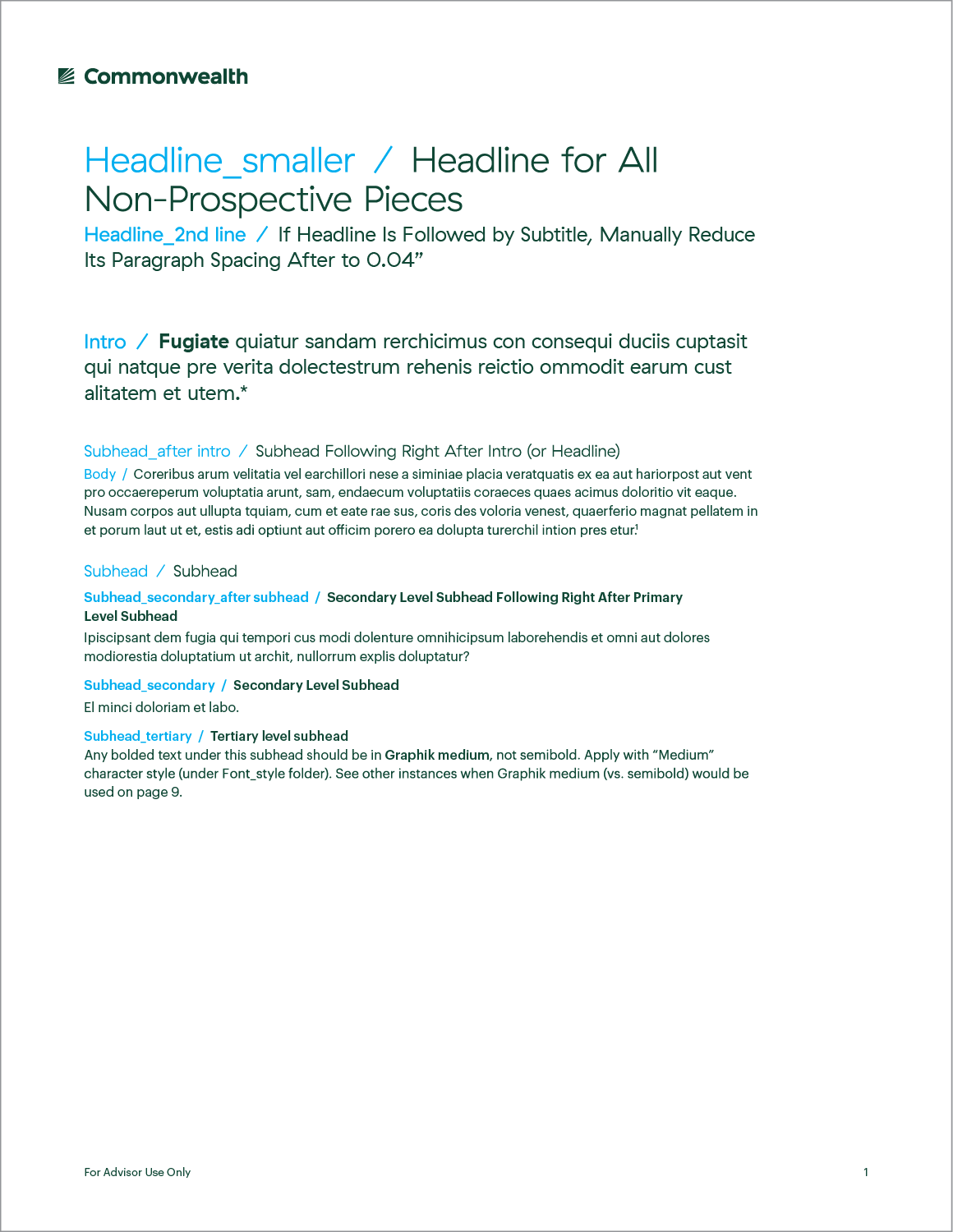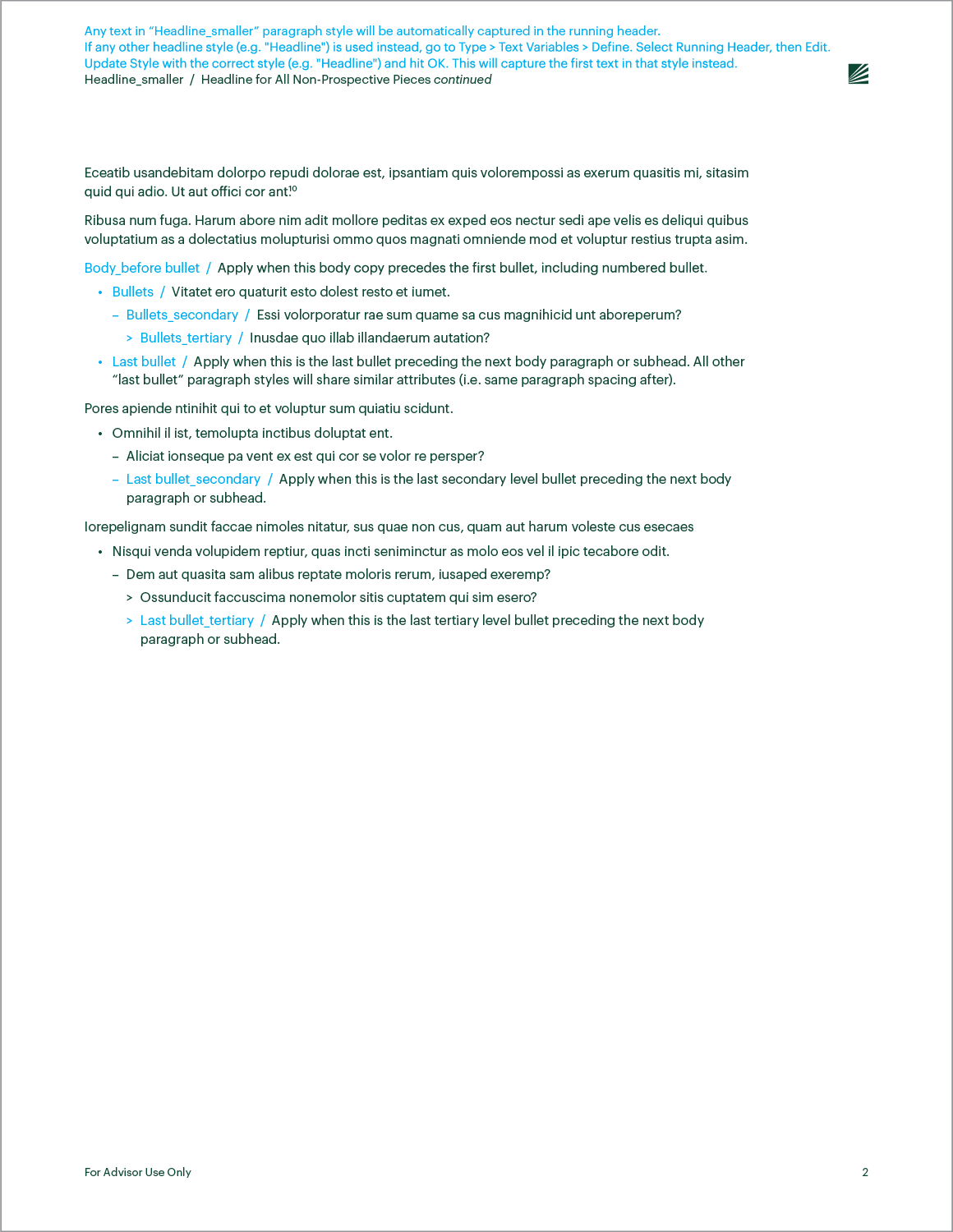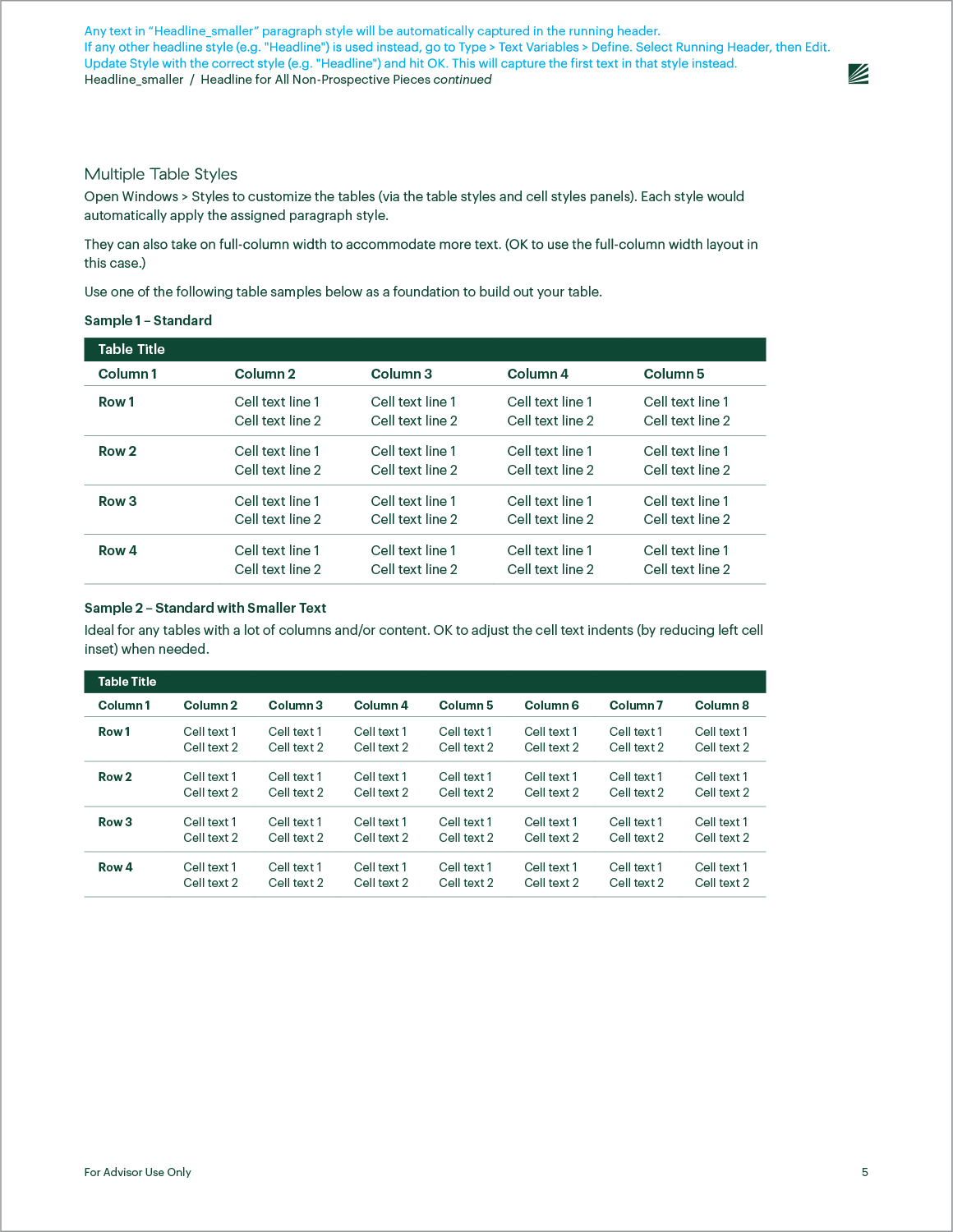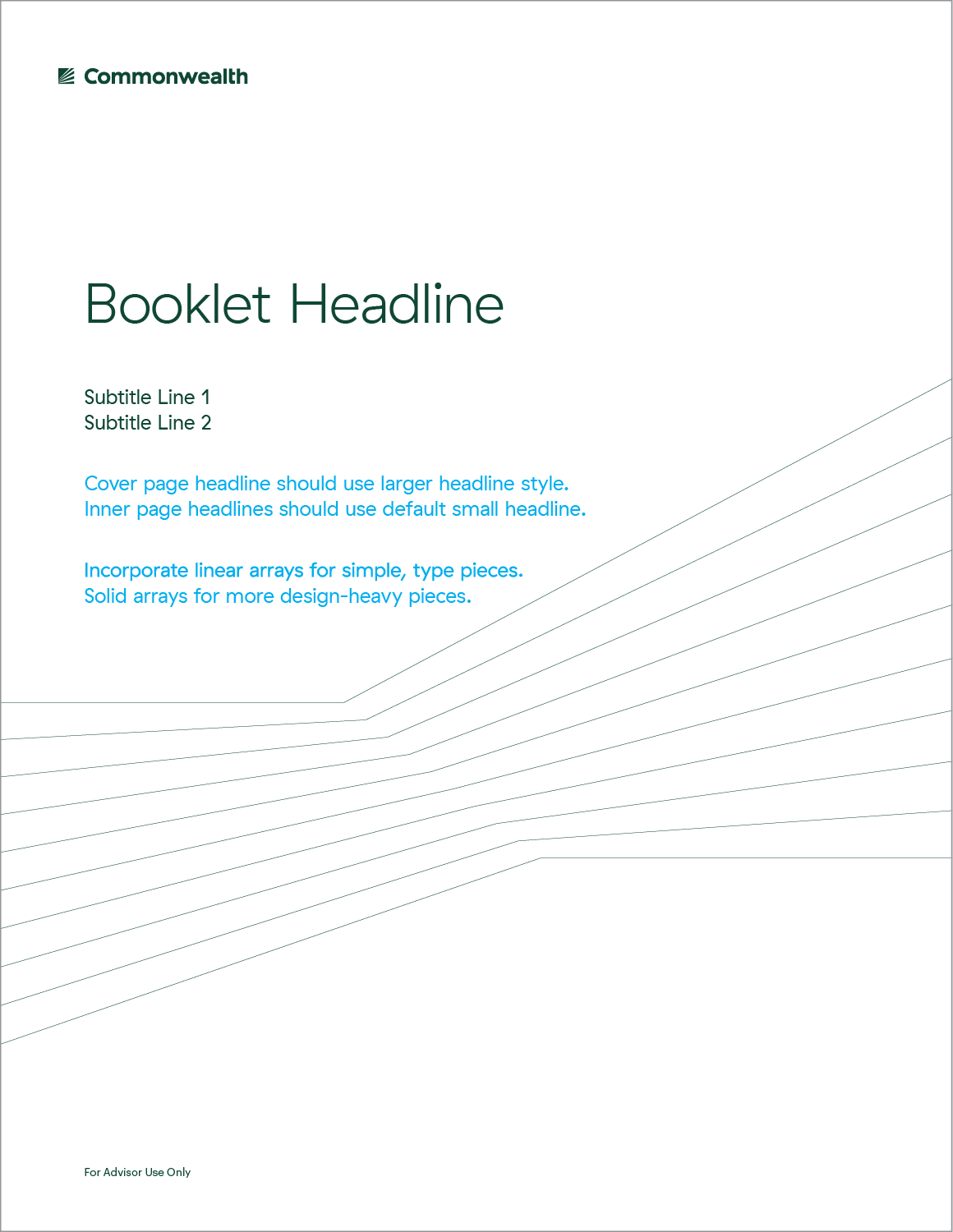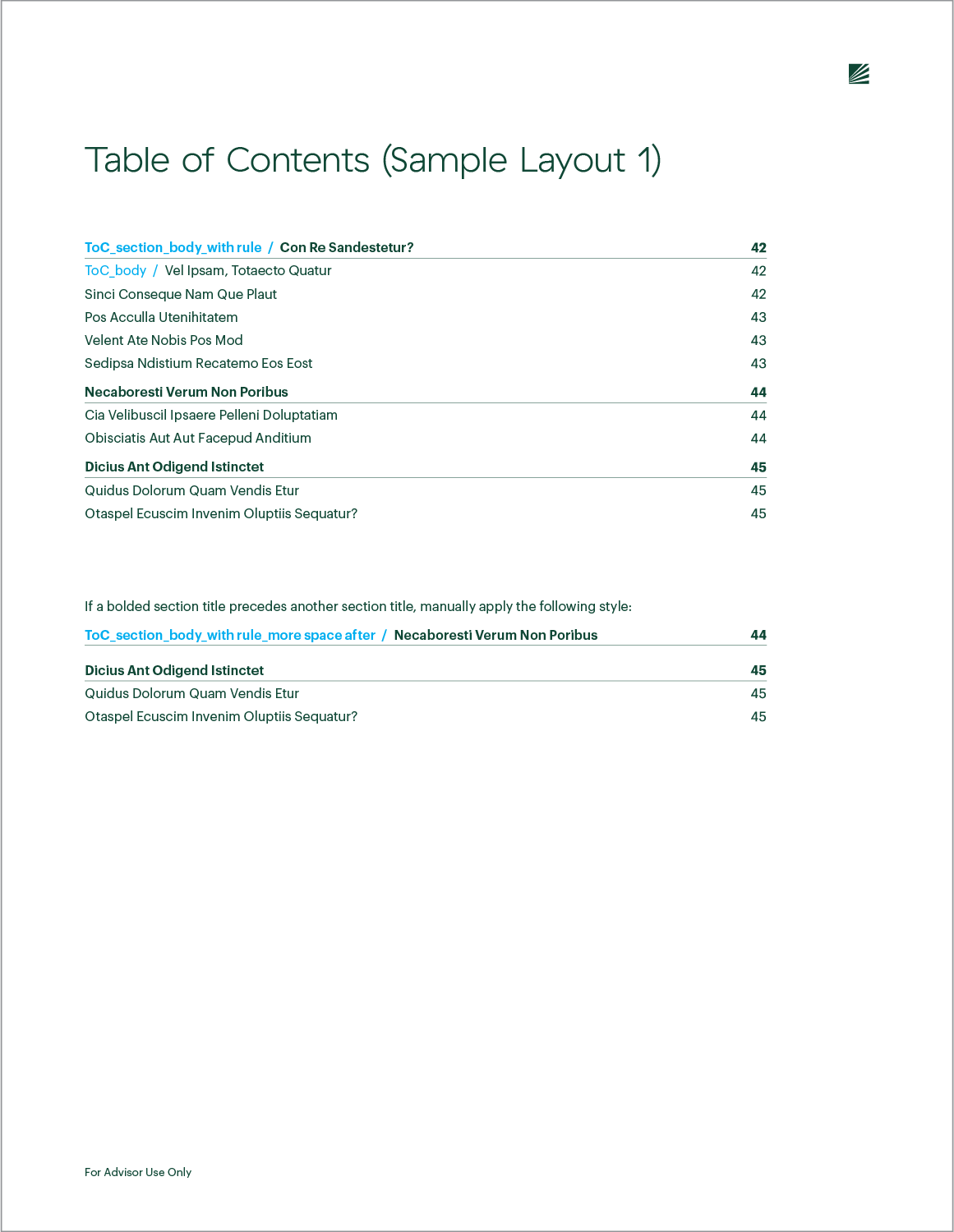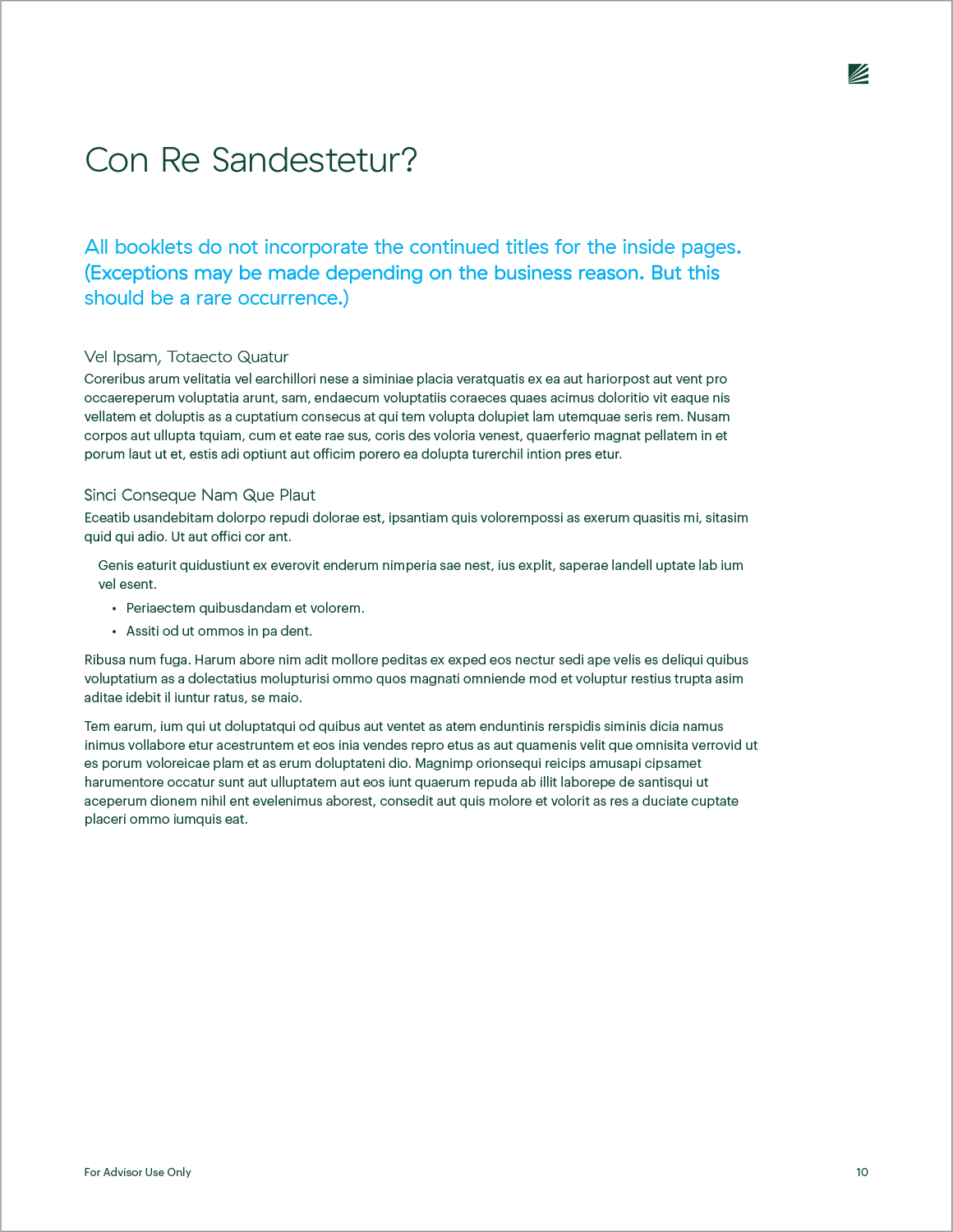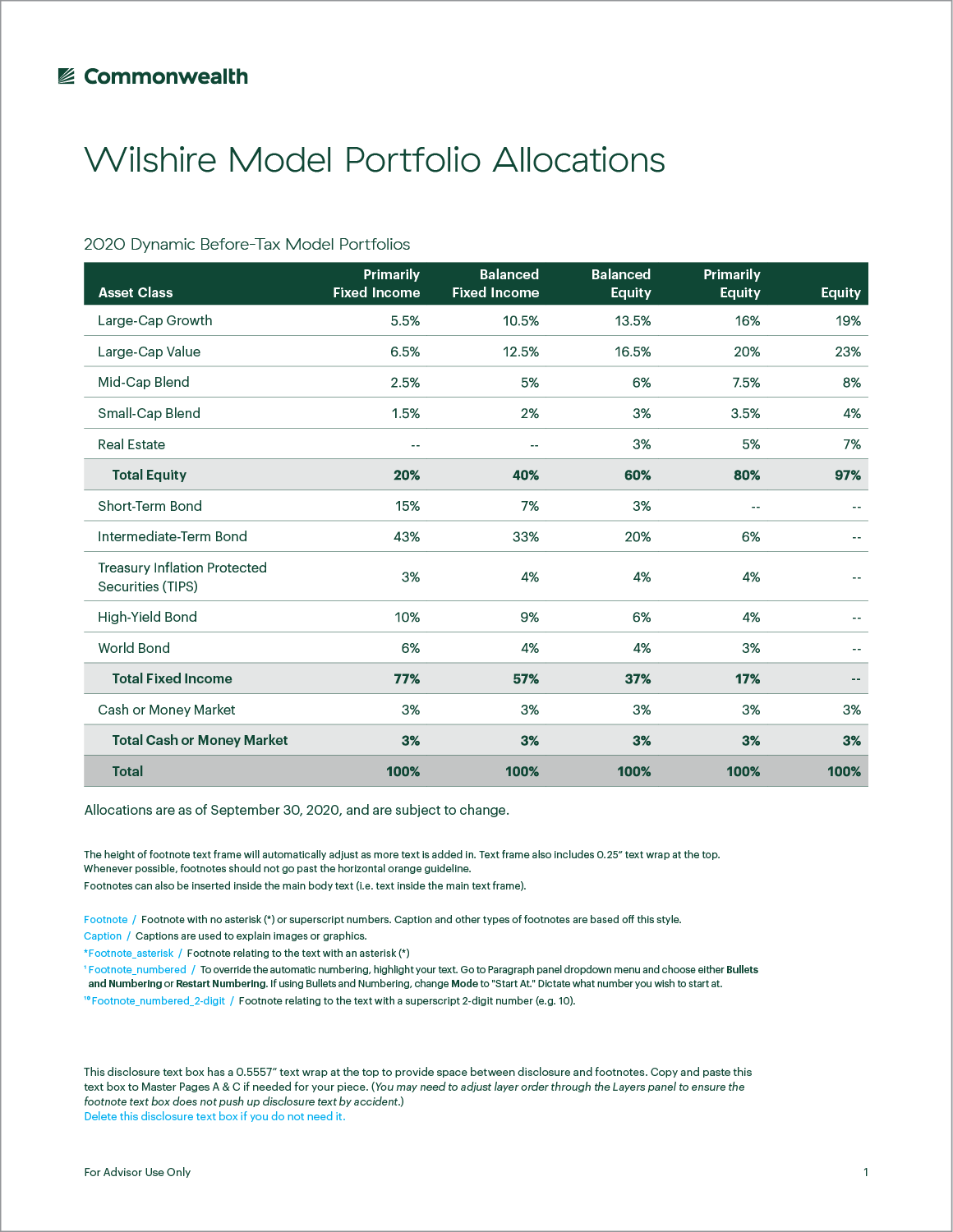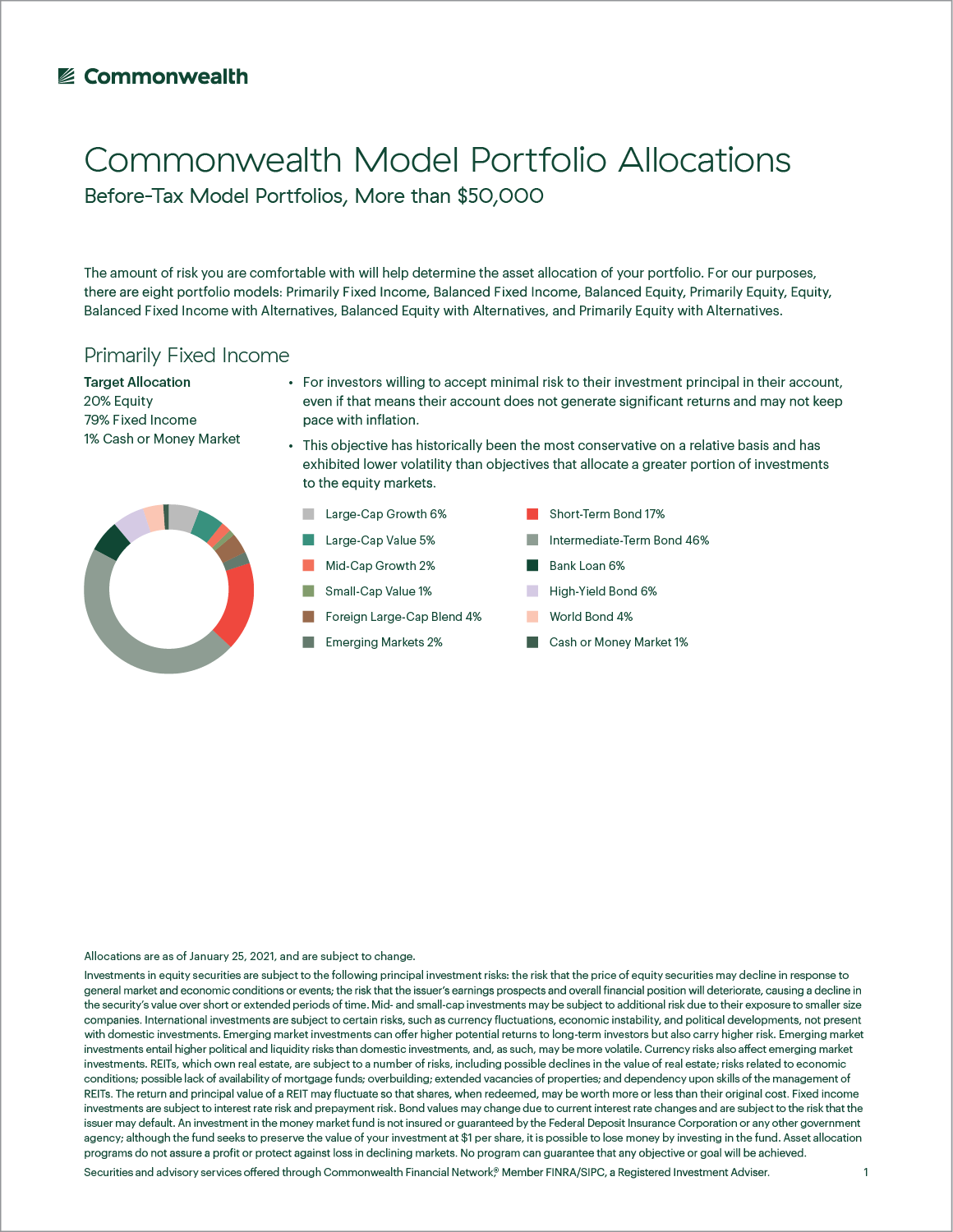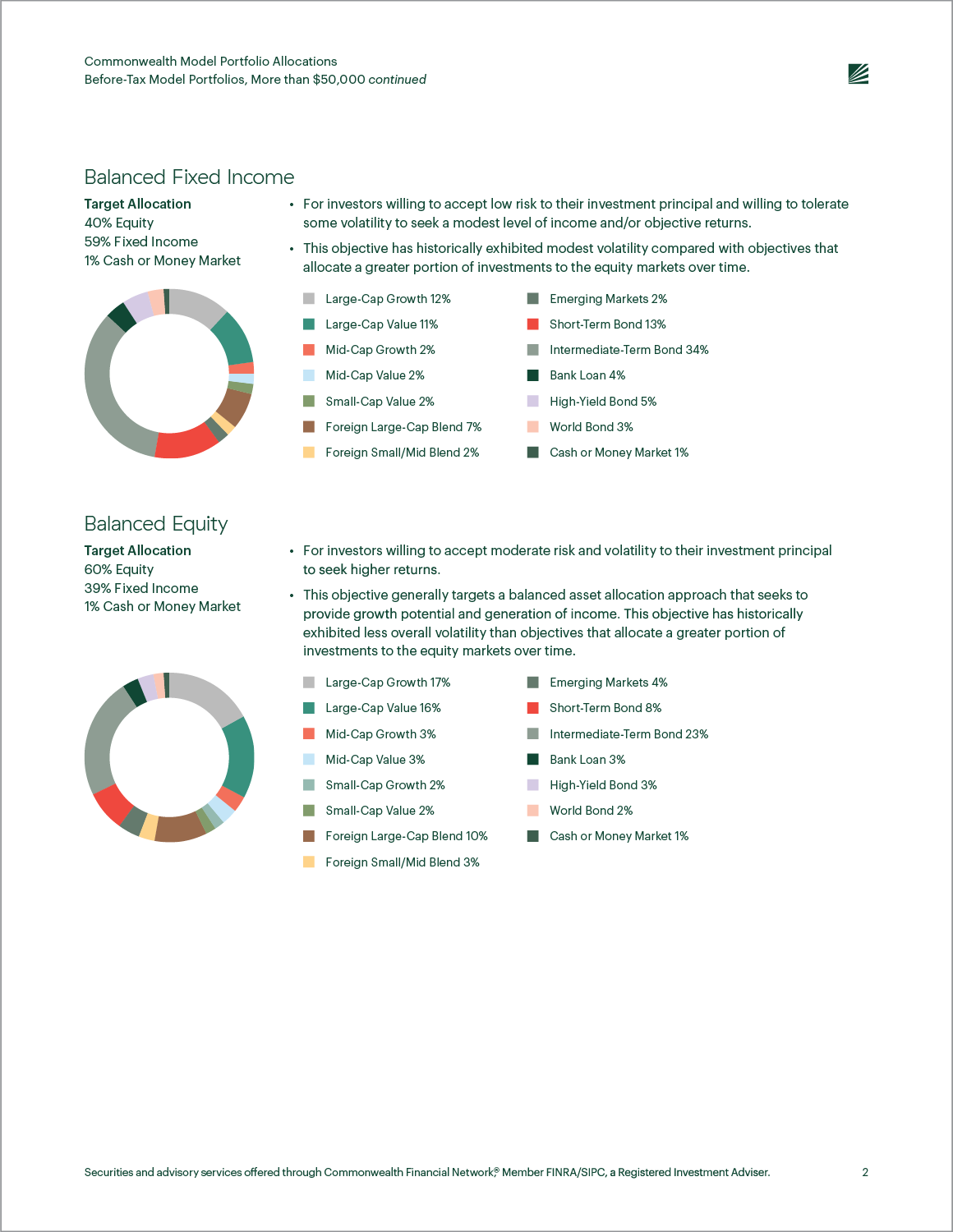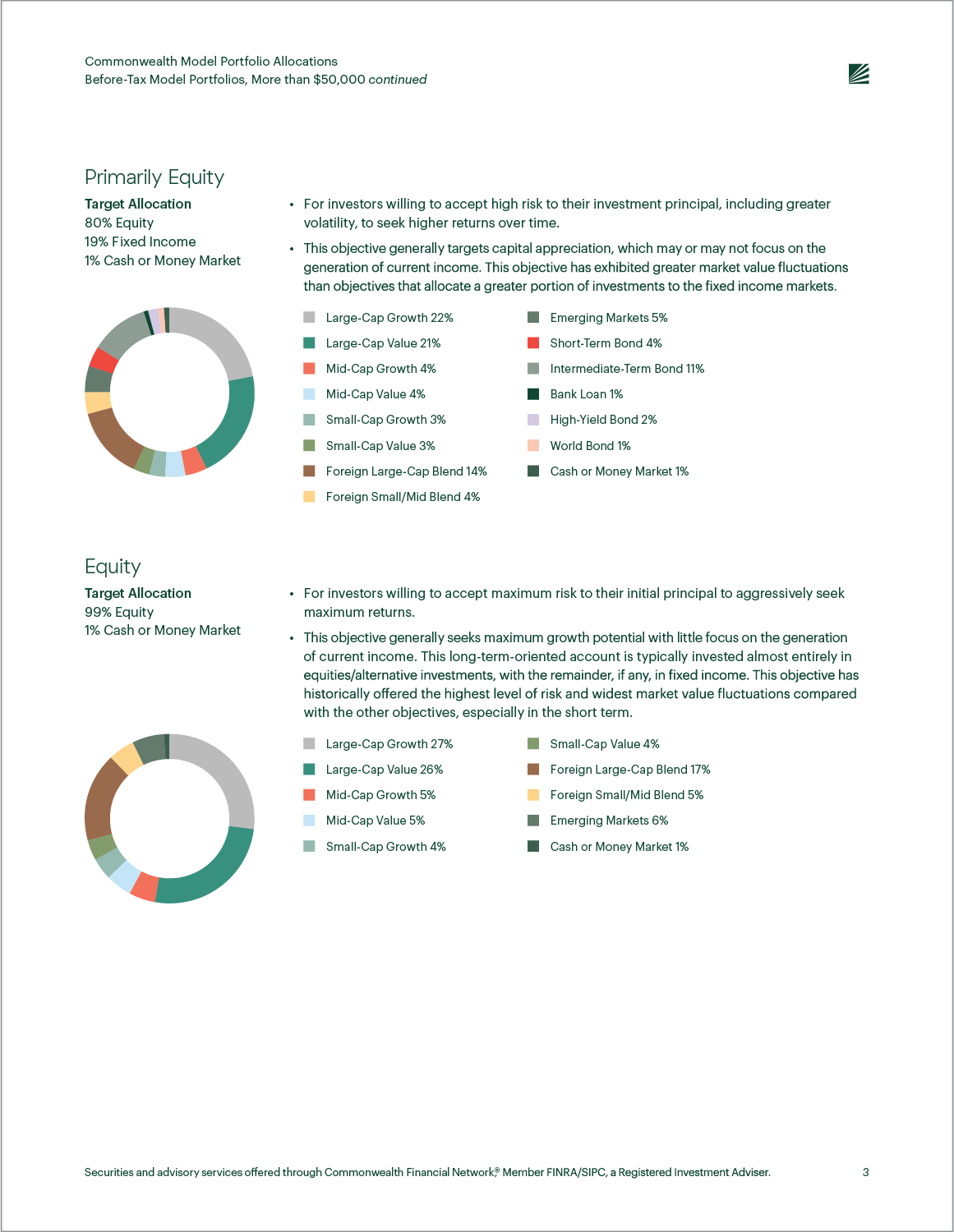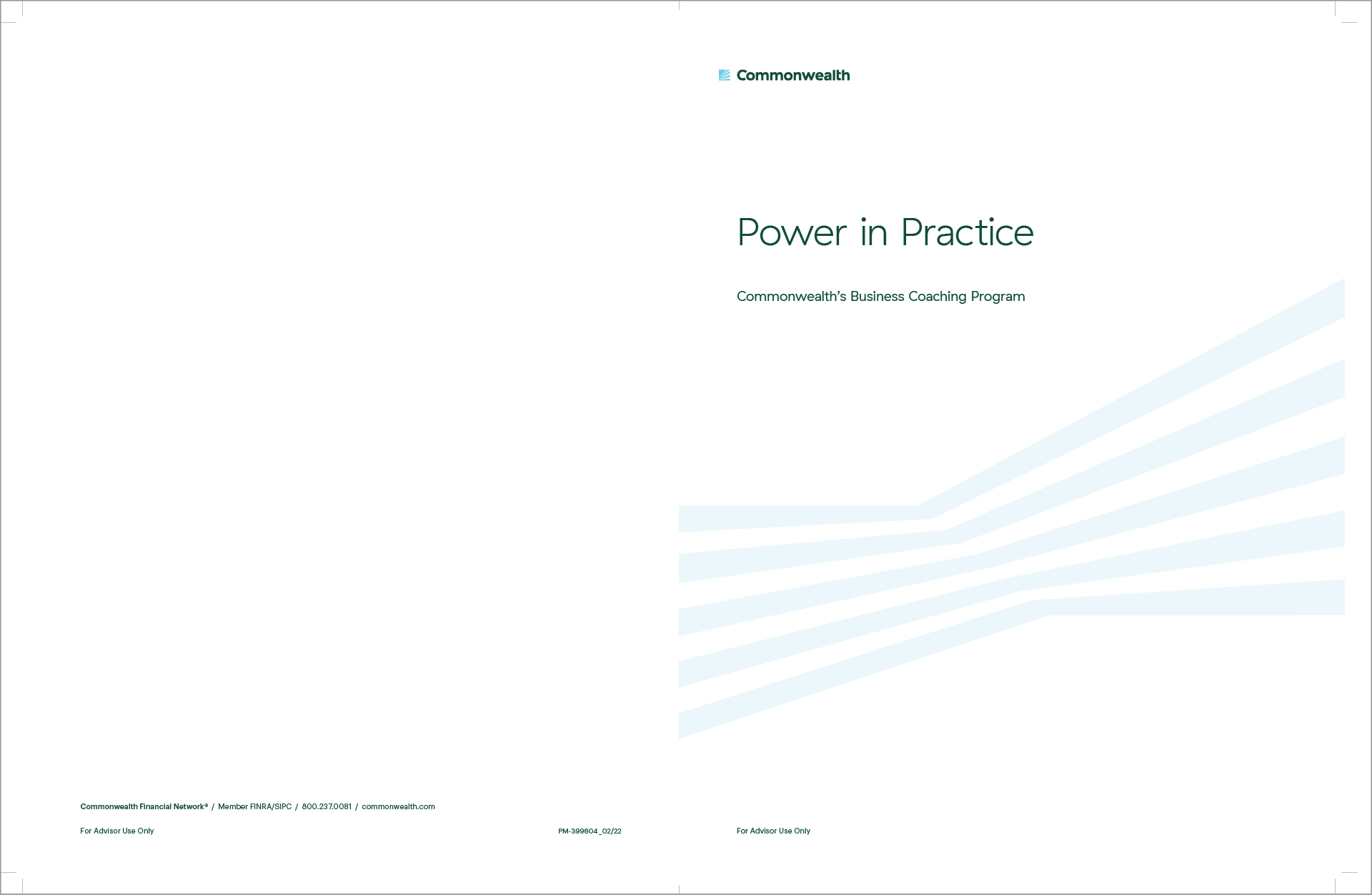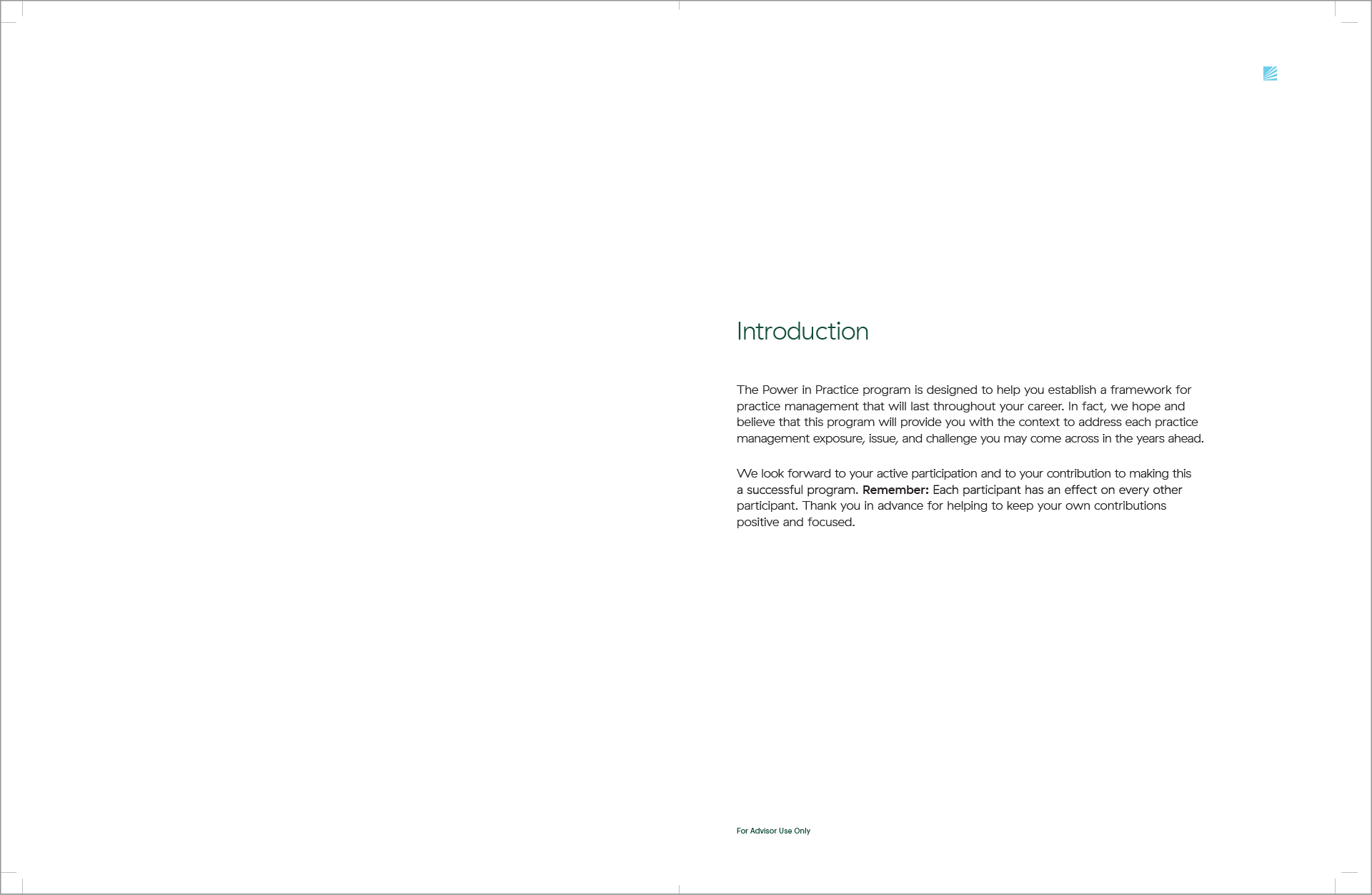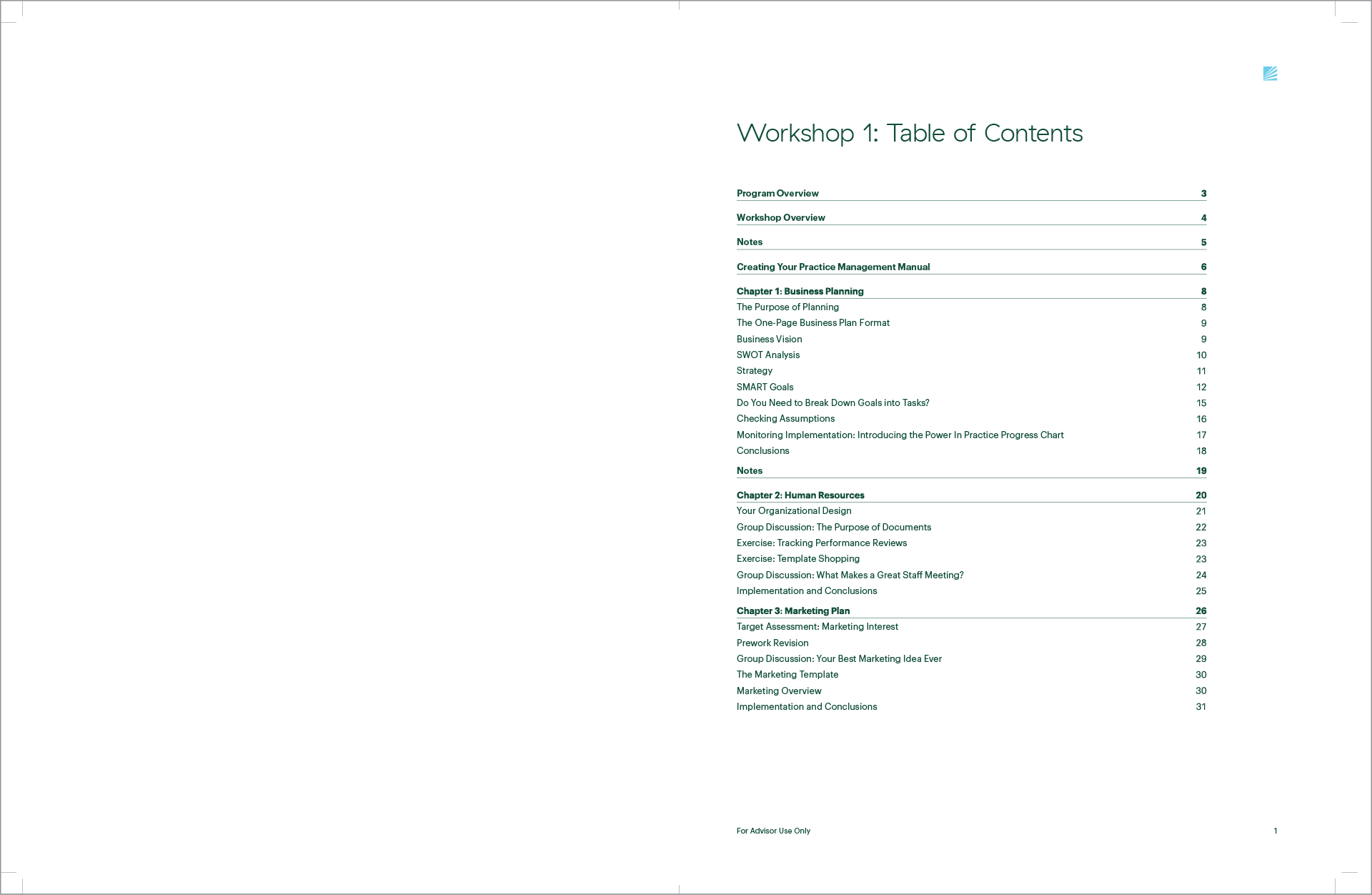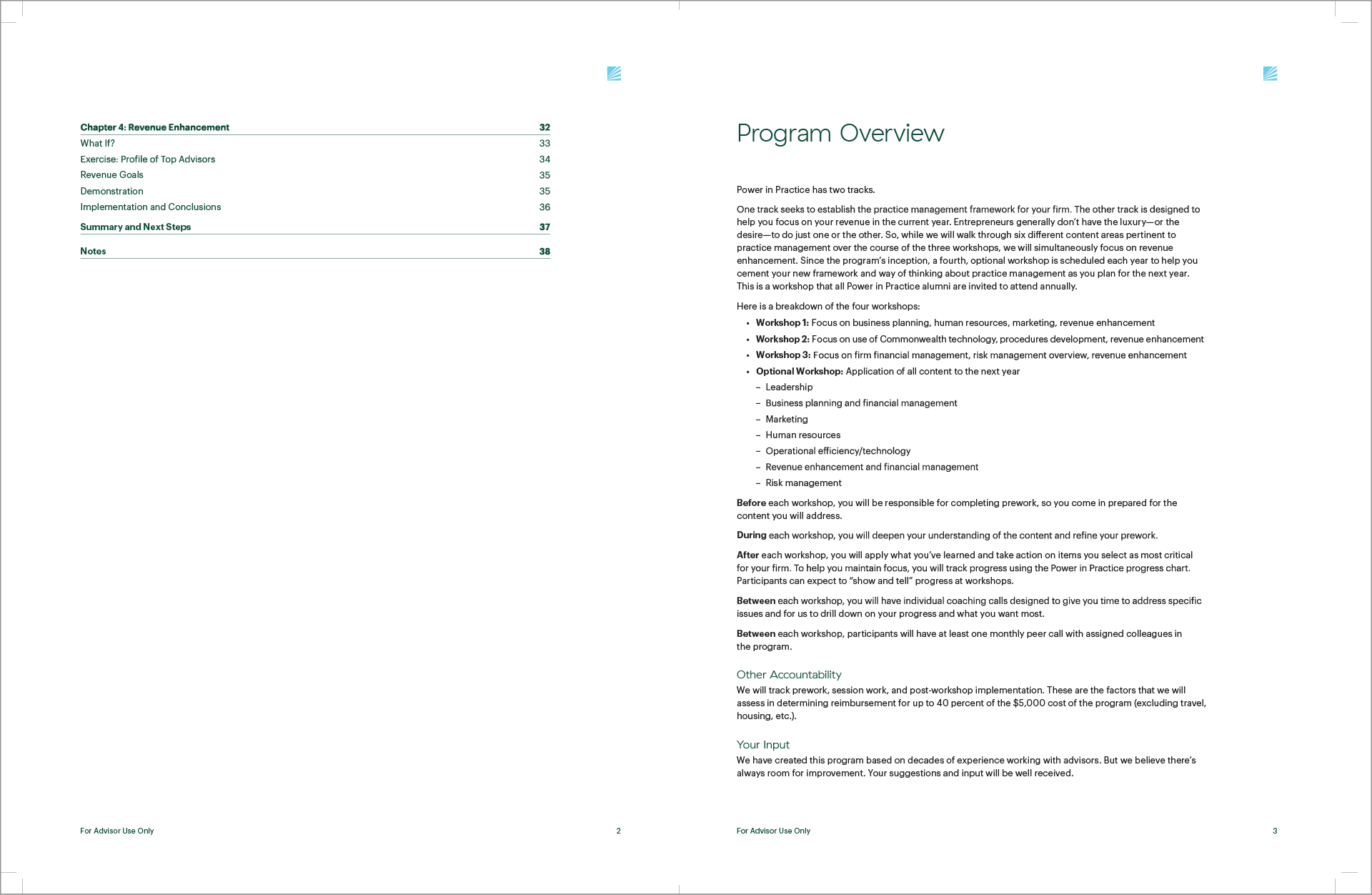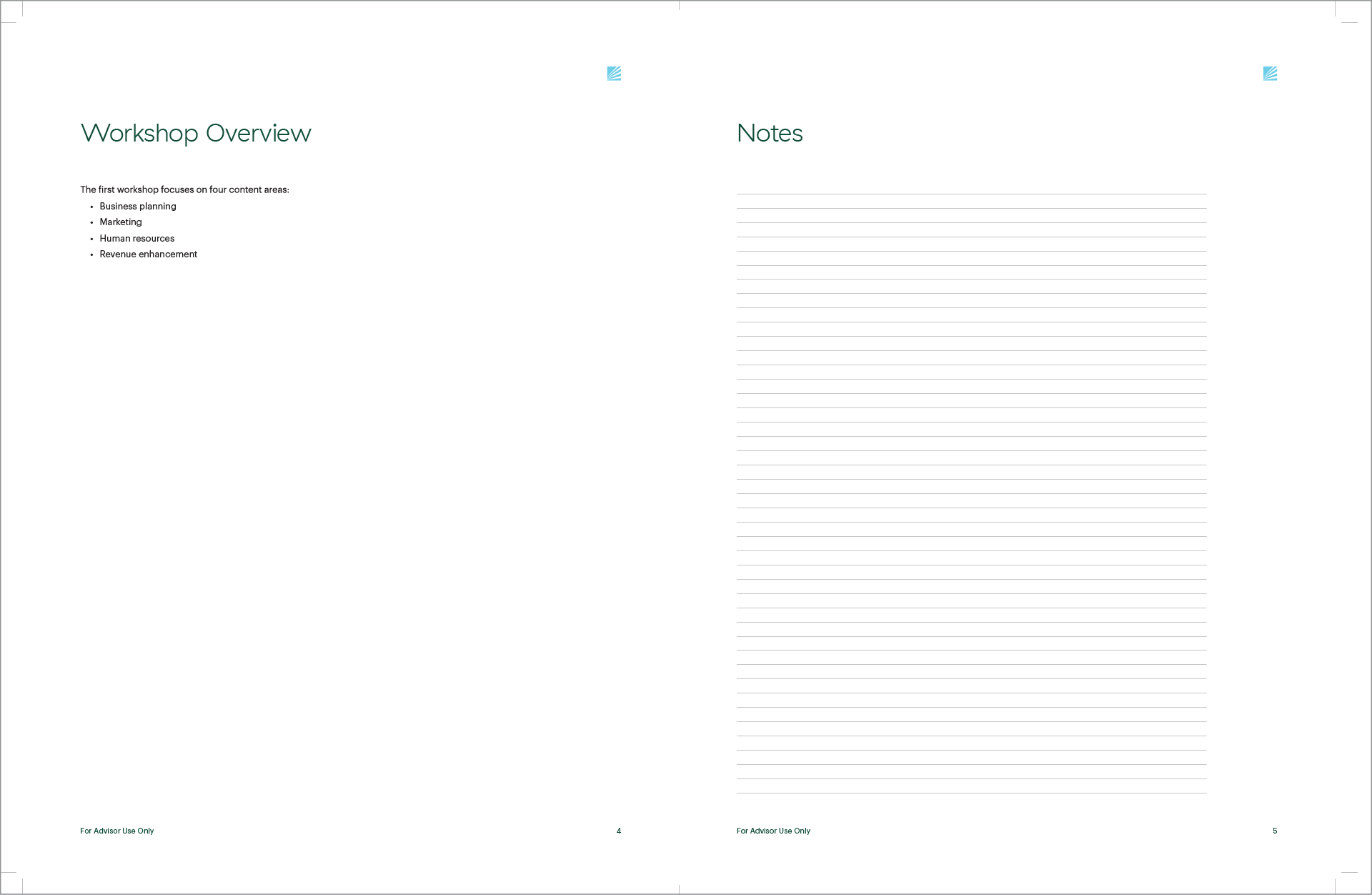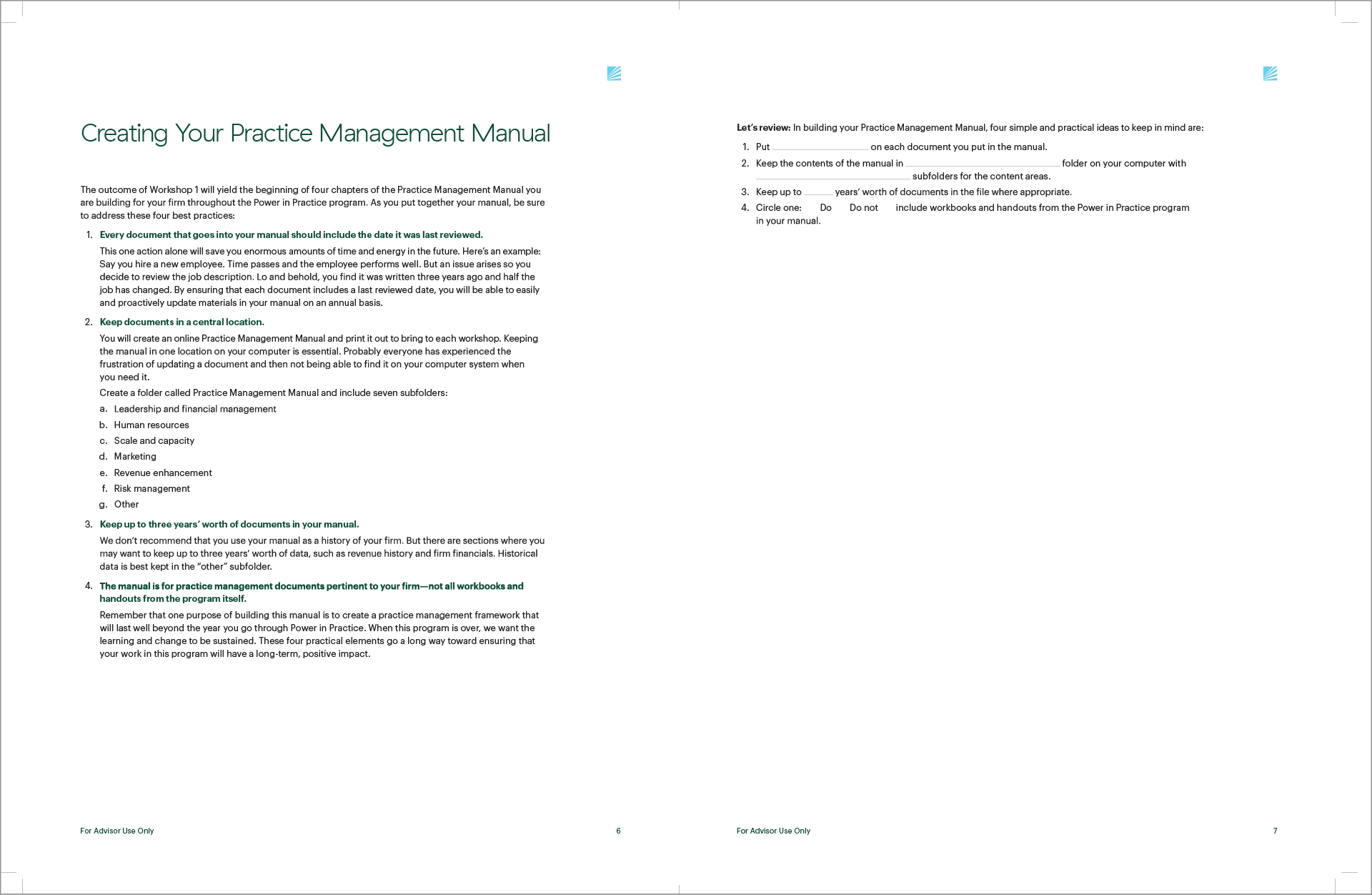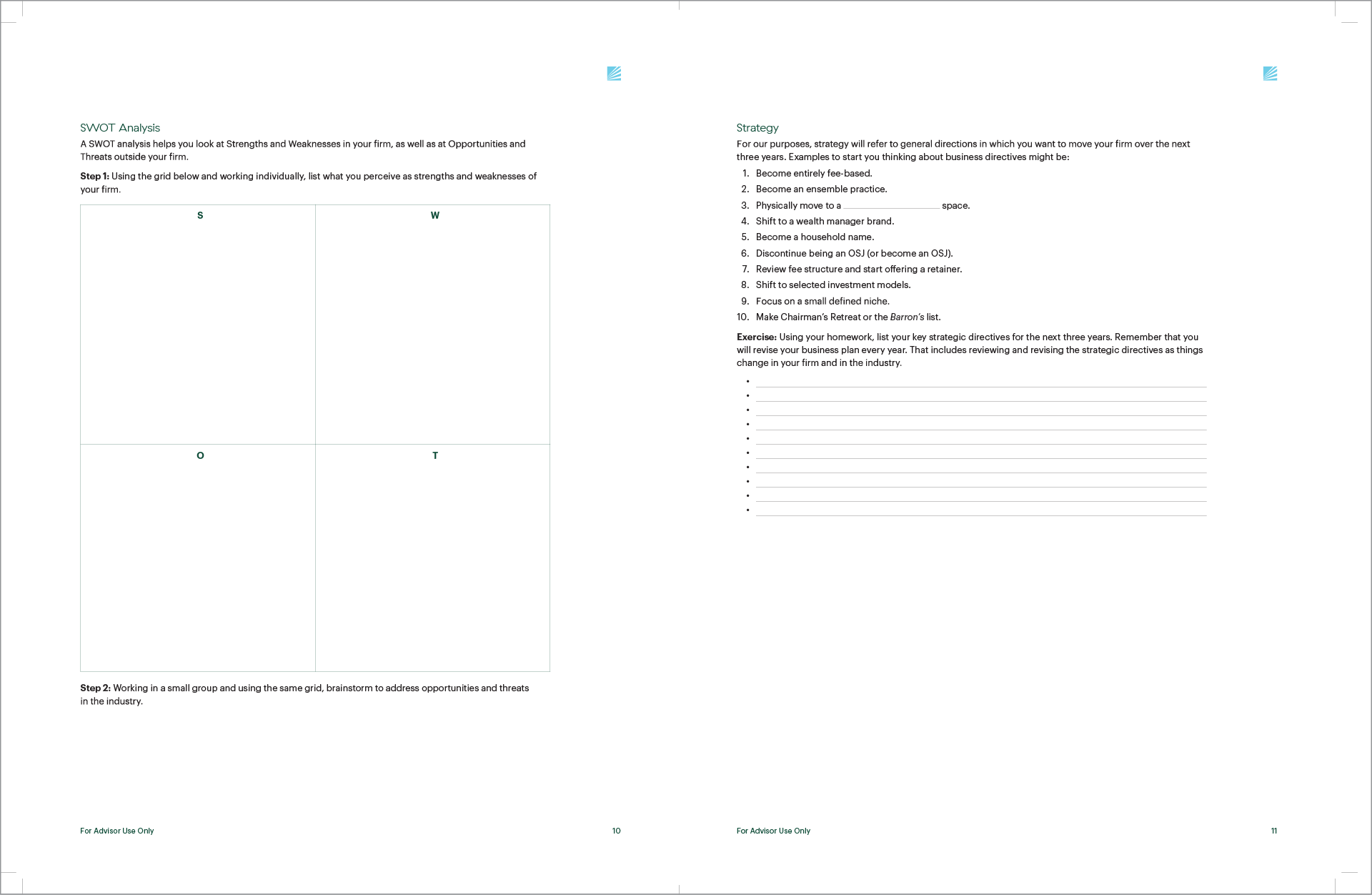The Type Template served as a base to produce corporate collateral that reflected Commonwealth‘s new brand. Subtemplates were later created to address increasing demand for commonly requested items. Here are a few sample pages of the subtemplates:
They were built with usability and flexibility in mind so designers could perform quick turnarounds.
Commonwealth Model Portfolio Allocations and Power in Practice workshop workbook* are byproducts of these subtemplates.
Check out the workbook PDF in its entirety.
* Template formatting standards had been revised later to incorporate the 2-color logo, update body text to black, and remove running header from subsequent pages.
Context:
In 2019–2020, Commonwealth went through a rebranding process to clarify and improve their business value proposition to prospective and existing advisor base—by changing their corporate image and messaging. To promote brand recognition and trust among advisors, the company needed to quickly produce some unified visual communication.
Process:
With the creative director’s recommendations, we’ve established guidelines and standards to follow for layout, text hierarchy, and other visual treatments. In the file, I included blue notes to identify paragraph styles used and share best practices for using the template. Dates and boilerplates are highlighted in pink to remind designers to update them.
Working on the template had been a challenging, eye-opening experience. The main takeaway for me is knowing that maintaining templates will be an ongoing process, requiring multiple reiterations and refinements. Modifications should be made based on user feedback.
Discussions with designers gave me valuable insight needed to improve usability. As an example, some designers preferred more instructions and appreciated having an extensive list of established paragraph and character styles. Other designers who believed in “less is more” felt overwhelmed by this list, which hindered their ability to perform quick turnarounds.
To address their needs, I’ve moved forward with the following solutions:
- Kept the Type Template as a master file. File would be accessed only by those tasked with maintaining it.
- Created multiple subtemplates from the master file. Each template would contain the bare minimum styles needed to create collateral.
- Allowed some flexibility to modify template specs so collateral can be tailored to meet particular business needs.
- Created a wikipedia file for those who wanted to reference and import a complete list of styles.
Hide context
